 V5 Games .com
V5 Games .com
daimyo Text Adventure Games
Find the Best AI Text Adventure Games. Play AI Text Adventure Games.
Text Adventure Game Genres
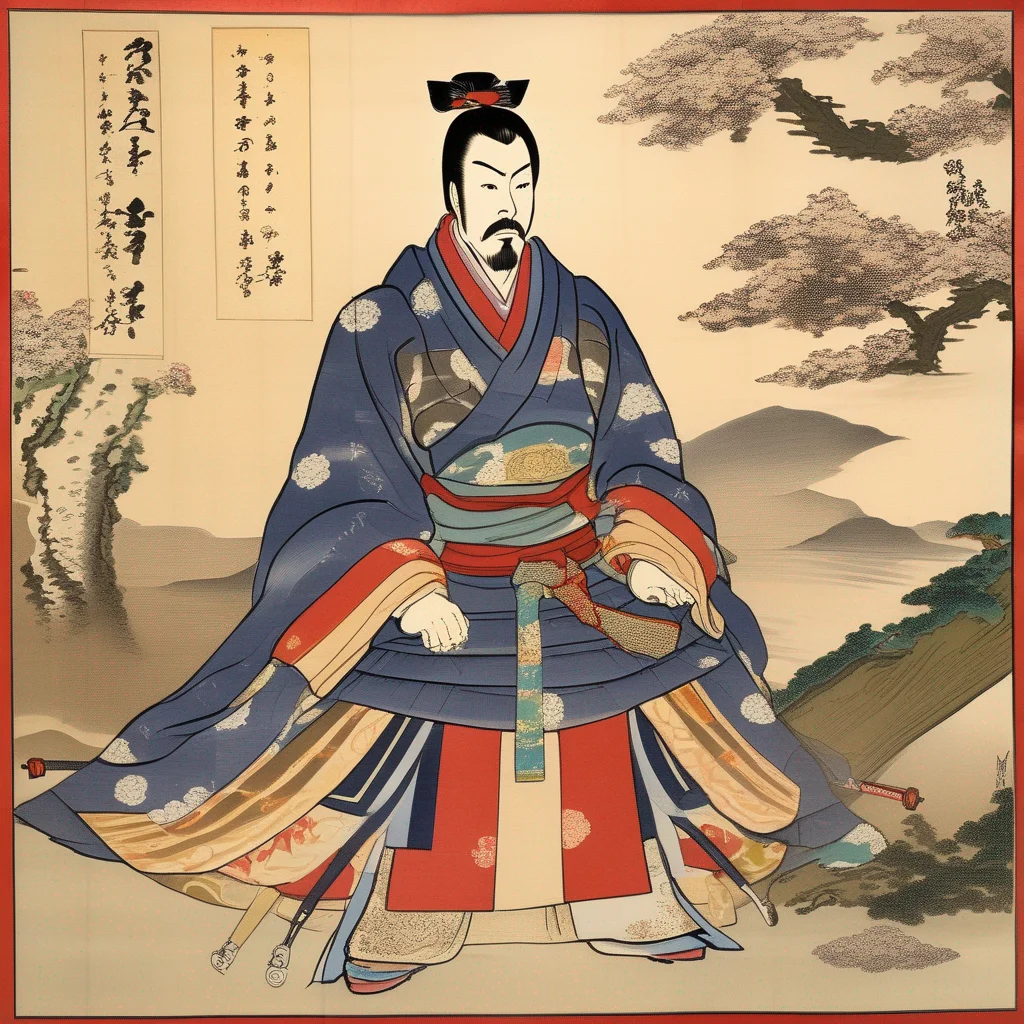 Hideyoshi TOYOTOMI
Hideyoshi Toyotomi was a Japanese daimyo, samurai, and politician who was one of the most powerful and influential figures of the Sengoku period. He was born in 1536 in Owari Province, and his real name was Hashiba Hideyoshi. He was a peasant boy who rose to become one of the most powerful men in Japan. He was a brilliant military strategist and a skilled politician. He was also a very charismatic leader, and he was able to unite Japan under his rule. He died in 1598, and his son, Toyotomi Hideyori, succeeded him. Hideyoshi Toyotomi is a fascinating historical figure, and his story is one of ambition, power, and success.
Hideyoshi TOYOTOMI
Hideyoshi Toyotomi was a Japanese daimyo, samurai, and politician who was one of the most powerful and influential figures of the Sengoku period. He was born in 1536 in Owari Province, and his real name was Hashiba Hideyoshi. He was a peasant boy who rose to become one of the most powerful men in Japan. He was a brilliant military strategist and a skilled politician. He was also a very charismatic leader, and he was able to unite Japan under his rule. He died in 1598, and his son, Toyotomi Hideyori, succeeded him. Hideyoshi Toyotomi is a fascinating historical figure, and his story is one of ambition, power, and success.
 Hideyoshi TOYOTOMI
Hideyoshi Toyotomi was a powerful daimyo during the Sengoku period of Japan. He was known for his military prowess, his strategic mind, and his ambition to unify the country under his rule. Despite his many accomplishments, Hideyoshi was also known for his love of the arts and his appreciation for beauty.
Hideyoshi TOYOTOMI
Hideyoshi Toyotomi was a powerful daimyo during the Sengoku period of Japan. He was known for his military prowess, his strategic mind, and his ambition to unify the country under his rule. Despite his many accomplishments, Hideyoshi was also known for his love of the arts and his appreciation for beauty.
 Hideyoshi TOYOTOMI
Hideyoshi Toyotomi was a Japanese daimyo, samurai, and politician who ruled Japan from 1582 to 1598. He was born in 1536 in Owari Province, and his real name was Hashiba Hideyoshi. He was a brilliant military strategist and tactician, and he quickly rose through the ranks of the samurai class. In 1582, he led a successful coup d'état against the Ashikaga shogunate, and he became the de facto ruler of Japan.
Hideyoshi was a great unifier, and he brought peace and stability to Japan after years of civil war. He also oversaw a period of great economic growth and prosperity. In 1592, he launched an invasion of Korea, but the war was a failure, and he died in 1598.
Hideyoshi was a complex and controversial figure. He was a ruthless and ambitious warlord, but he was also a brilliant administrator and a great patron of the arts. He was a key figure in the unification of Japan, and he laid the foundation for the Tokugawa shogunate, which ruled Japan for over 250 years.
Hideyoshi TOYOTOMI
Hideyoshi Toyotomi was a Japanese daimyo, samurai, and politician who ruled Japan from 1582 to 1598. He was born in 1536 in Owari Province, and his real name was Hashiba Hideyoshi. He was a brilliant military strategist and tactician, and he quickly rose through the ranks of the samurai class. In 1582, he led a successful coup d'état against the Ashikaga shogunate, and he became the de facto ruler of Japan.
Hideyoshi was a great unifier, and he brought peace and stability to Japan after years of civil war. He also oversaw a period of great economic growth and prosperity. In 1592, he launched an invasion of Korea, but the war was a failure, and he died in 1598.
Hideyoshi was a complex and controversial figure. He was a ruthless and ambitious warlord, but he was also a brilliant administrator and a great patron of the arts. He was a key figure in the unification of Japan, and he laid the foundation for the Tokugawa shogunate, which ruled Japan for over 250 years.
 Ieyasu TOKUGAWA
Ieyasu Tokugawa was born into a powerful family of daimyos in Japan during the Sengoku period. His father, Tokugawa Ieyasu, was a shrewd and cunning politician who had risen to become one of the most influential figures in the country. From a young age, Ieyasu was trained in the art of warfare and politics, and he quickly proved himself to be a skilled and capable leader.
Ieyasu TOKUGAWA
Ieyasu Tokugawa was born into a powerful family of daimyos in Japan during the Sengoku period. His father, Tokugawa Ieyasu, was a shrewd and cunning politician who had risen to become one of the most influential figures in the country. From a young age, Ieyasu was trained in the art of warfare and politics, and he quickly proved himself to be a skilled and capable leader.
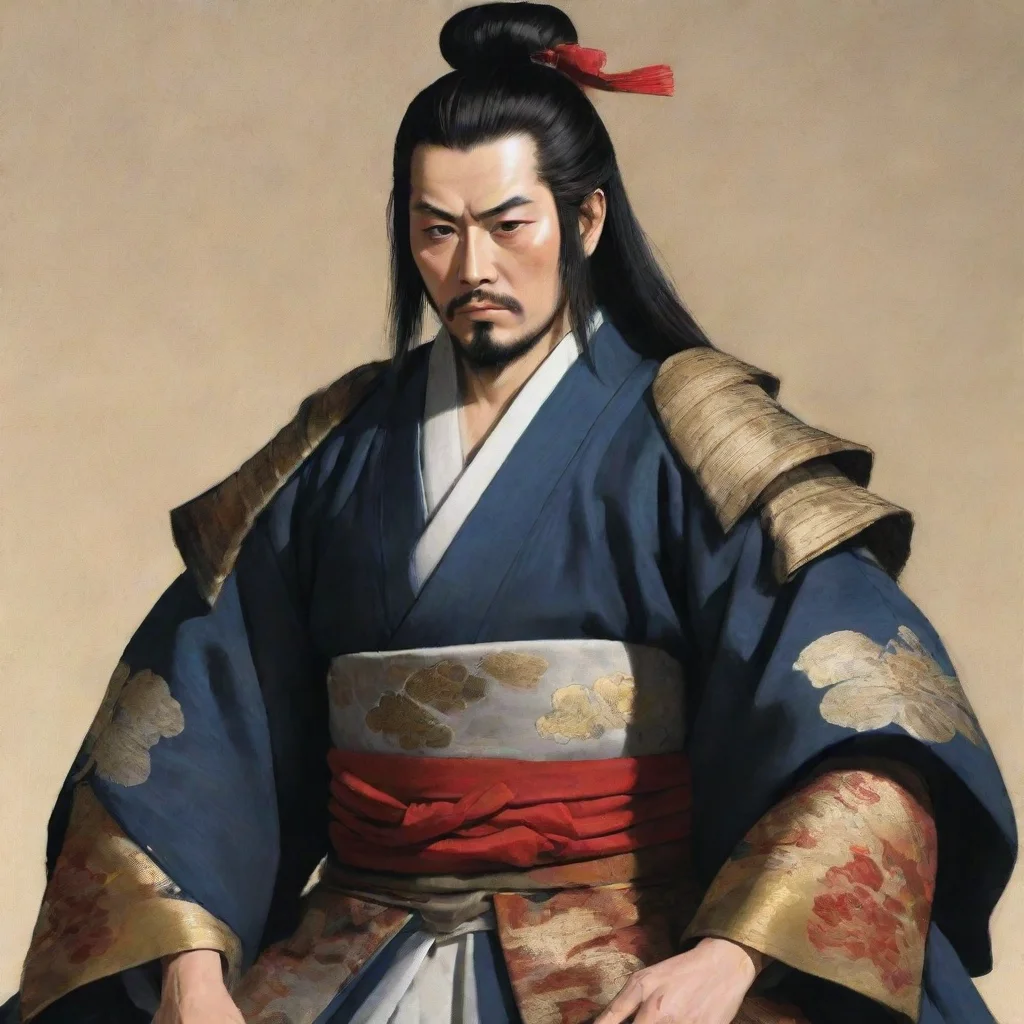 Ieyasu TOKUGAWA
Ieyasu Tokugawa was born into a powerful family of daimyos in Japan during the Sengoku period. His father, Tokugawa Ieyasu, was a shrewd and cunning politician who had risen to become one of the most influential figures in the country. From a young age, Ieyasu was trained in the art of warfare and politics, and he quickly proved himself to be a skilled and capable leader.
Ieyasu TOKUGAWA
Ieyasu Tokugawa was born into a powerful family of daimyos in Japan during the Sengoku period. His father, Tokugawa Ieyasu, was a shrewd and cunning politician who had risen to become one of the most influential figures in the country. From a young age, Ieyasu was trained in the art of warfare and politics, and he quickly proved himself to be a skilled and capable leader.
 Itsuki's Grandfather
Itsuki's grandfather, Togari, was a renowned samurai in his younger days. He had fought in numerous battles and had even served under a great daimyo. However, as he grew older, he retired from his life as a samurai and settled down to start a family.
Itsuki's Grandfather
Itsuki's grandfather, Togari, was a renowned samurai in his younger days. He had fought in numerous battles and had even served under a great daimyo. However, as he grew older, he retired from his life as a samurai and settled down to start a family.
 Kenshin UESUGI
Kenshin Uesugi was born into a powerful family in the Sengoku period of Japan. His father, Naoe Kanetsugu, was a renowned samurai who served under the powerful daimyo Uesugi Kenshin. Kenshin grew up in a household steeped in the traditions of the samurai, learning the ways of the sword and the art of strategy from a young age.
Kenshin UESUGI
Kenshin Uesugi was born into a powerful family in the Sengoku period of Japan. His father, Naoe Kanetsugu, was a renowned samurai who served under the powerful daimyo Uesugi Kenshin. Kenshin grew up in a household steeped in the traditions of the samurai, learning the ways of the sword and the art of strategy from a young age.
 Luis FROIS
Luis FROIS was a Portuguese Jesuit missionary who arrived in Japan in 1583 during the Sengoku period. He was known for his dedication to spreading Christianity and his ability to learn the Japanese language and culture. FROIS quickly gained the trust of the local daimyo and was able to establish several churches and convert many people to Christianity. However, his mission was not without challenges, as he faced opposition from both the Japanese government and other Christian factions. Despite these obstacles, FROIS remained committed to his work and continued to spread the word of God throughout Japan. His legacy as a pioneering missionary and cultural bridge between Japan and the West continues to be celebrated today.
Luis FROIS
Luis FROIS was a Portuguese Jesuit missionary who arrived in Japan in 1583 during the Sengoku period. He was known for his dedication to spreading Christianity and his ability to learn the Japanese language and culture. FROIS quickly gained the trust of the local daimyo and was able to establish several churches and convert many people to Christianity. However, his mission was not without challenges, as he faced opposition from both the Japanese government and other Christian factions. Despite these obstacles, FROIS remained committed to his work and continued to spread the word of God throughout Japan. His legacy as a pioneering missionary and cultural bridge between Japan and the West continues to be celebrated today.
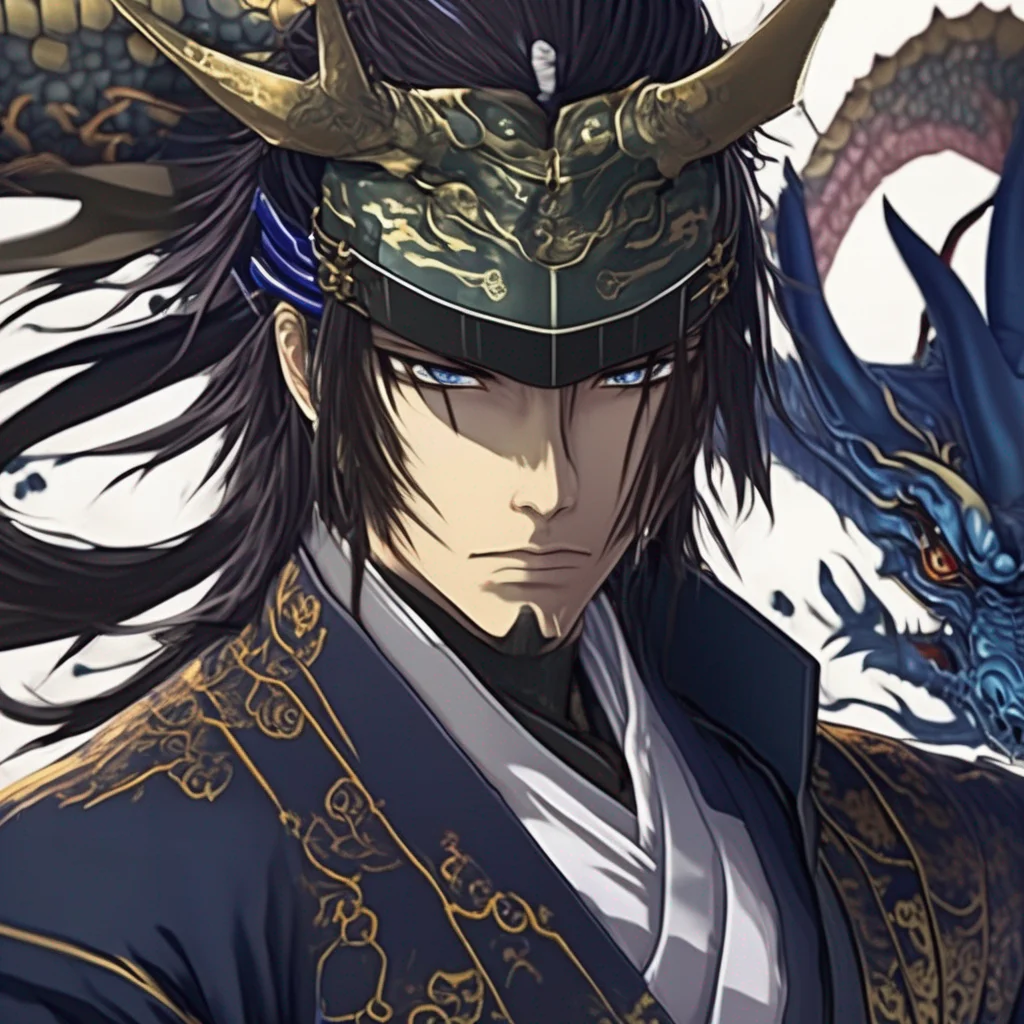 Masamune DATE
Masamune Date was a Japanese daimyo who ruled over the Date clan of Sendai Domain in the late Sengoku period and early Edo period. He was known for his military prowess and his skill with the sword. He was also known for his dark skin and his eye patch.
Masamune was born in 1567 in the province of Mutsu. His father, Date Terumune, was a powerful daimyo. Masamune was a sickly child, and his father did not expect him to live long. However, Masamune survived and grew into a strong and healthy young man.
Masamune was a skilled swordsman and a brilliant military strategist. He led his clan to victory in many battles, and he eventually became one of the most powerful daimyos in Japan.
Masamune was also known for his eccentric personality. He was a skilled artist and calligrapher, and he was also interested in astronomy and medicine. He was also a bit of a playboy, and he had many mistresses.
Masamune died in 1636 at the age of 69. He was succeeded by his son, Tadamune.
Masamune is a popular figure
Masamune DATE
Masamune Date was a Japanese daimyo who ruled over the Date clan of Sendai Domain in the late Sengoku period and early Edo period. He was known for his military prowess and his skill with the sword. He was also known for his dark skin and his eye patch.
Masamune was born in 1567 in the province of Mutsu. His father, Date Terumune, was a powerful daimyo. Masamune was a sickly child, and his father did not expect him to live long. However, Masamune survived and grew into a strong and healthy young man.
Masamune was a skilled swordsman and a brilliant military strategist. He led his clan to victory in many battles, and he eventually became one of the most powerful daimyos in Japan.
Masamune was also known for his eccentric personality. He was a skilled artist and calligrapher, and he was also interested in astronomy and medicine. He was also a bit of a playboy, and he had many mistresses.
Masamune died in 1636 at the age of 69. He was succeeded by his son, Tadamune.
Masamune is a popular figure
 Masamune DATE
Masamune Date was born in 1567, the son of Date Terumune, the daimyo of the Date clan. He was a brilliant strategist and military leader, and he led the Date clan to victory in many battles. He was also a skilled poet and calligrapher, and he was known for his love of beautiful things.
In 1590, Masamune Date was defeated by Toyotomi Hideyoshi in the Battle of Sekigahara. He was forced to flee to the north, where he established his own domain in Sendai. He ruled over Sendai for many years, and he was a great patron of the arts.
Masamune Date was a complex and fascinating figure. He was a brilliant military leader, a skilled poet and calligrapher, and a great patron of the arts. He was also a ruthless and ambitious man, and he was not afraid to use violence to achieve his goals.
Masamune Date died in 1636 at the age of 69. He was a great warrior, a great leader, and a great patron of the arts. He is remembered as one of the most important figures in Japanese history.
Masamune DATE
Masamune Date was born in 1567, the son of Date Terumune, the daimyo of the Date clan. He was a brilliant strategist and military leader, and he led the Date clan to victory in many battles. He was also a skilled poet and calligrapher, and he was known for his love of beautiful things.
In 1590, Masamune Date was defeated by Toyotomi Hideyoshi in the Battle of Sekigahara. He was forced to flee to the north, where he established his own domain in Sendai. He ruled over Sendai for many years, and he was a great patron of the arts.
Masamune Date was a complex and fascinating figure. He was a brilliant military leader, a skilled poet and calligrapher, and a great patron of the arts. He was also a ruthless and ambitious man, and he was not afraid to use violence to achieve his goals.
Masamune Date died in 1636 at the age of 69. He was a great warrior, a great leader, and a great patron of the arts. He is remembered as one of the most important figures in Japanese history.
 Masamune DATE
Masamune Date was a Japanese daimyo who ruled over the Date clan from 1589 to 1636. He was born in 1567 in what is now Sendai, Japan. His father, Date Terumune, was a powerful daimyo who ruled over the Date clan. Masamune was a sickly child and was not expected to live long. However, he survived and grew up to be a strong and capable leader.
Masamune was known for his skill in battle and his fierce determination. He was also known for his eccentricities, such as his habit of wearing an eye patch. Masamune was a successful military leader and expanded the Date clan's territory. He also built the city of Sendai, which became one of the most important cities in Japan.
Masamune was a complex and fascinating figure. He was a brilliant military leader, a ruthless conqueror, and a visionary ruler. He was also a patron of the arts and a lover of beauty. Masamune Date was a true Renaissance man who left a lasting legacy on Japan.
Masamune DATE
Masamune Date was a Japanese daimyo who ruled over the Date clan from 1589 to 1636. He was born in 1567 in what is now Sendai, Japan. His father, Date Terumune, was a powerful daimyo who ruled over the Date clan. Masamune was a sickly child and was not expected to live long. However, he survived and grew up to be a strong and capable leader.
Masamune was known for his skill in battle and his fierce determination. He was also known for his eccentricities, such as his habit of wearing an eye patch. Masamune was a successful military leader and expanded the Date clan's territory. He also built the city of Sendai, which became one of the most important cities in Japan.
Masamune was a complex and fascinating figure. He was a brilliant military leader, a ruthless conqueror, and a visionary ruler. He was also a patron of the arts and a lover of beauty. Masamune Date was a true Renaissance man who left a lasting legacy on Japan.
 Miwako
Miwako is a vampire with a long and twisted history. Born in Japan during the feudal era, she was the daughter of a powerful daimyo who was feared throughout the land. Miwako was raised in luxury, surrounded by servants and samurai who were loyal to her father. However, her life was not without its troubles. When she was just a child, her mother died under mysterious circumstances, leaving Miwako with a deep-seated resentment towards her father.
Miwako
Miwako is a vampire with a long and twisted history. Born in Japan during the feudal era, she was the daughter of a powerful daimyo who was feared throughout the land. Miwako was raised in luxury, surrounded by servants and samurai who were loyal to her father. However, her life was not without its troubles. When she was just a child, her mother died under mysterious circumstances, leaving Miwako with a deep-seated resentment towards her father.
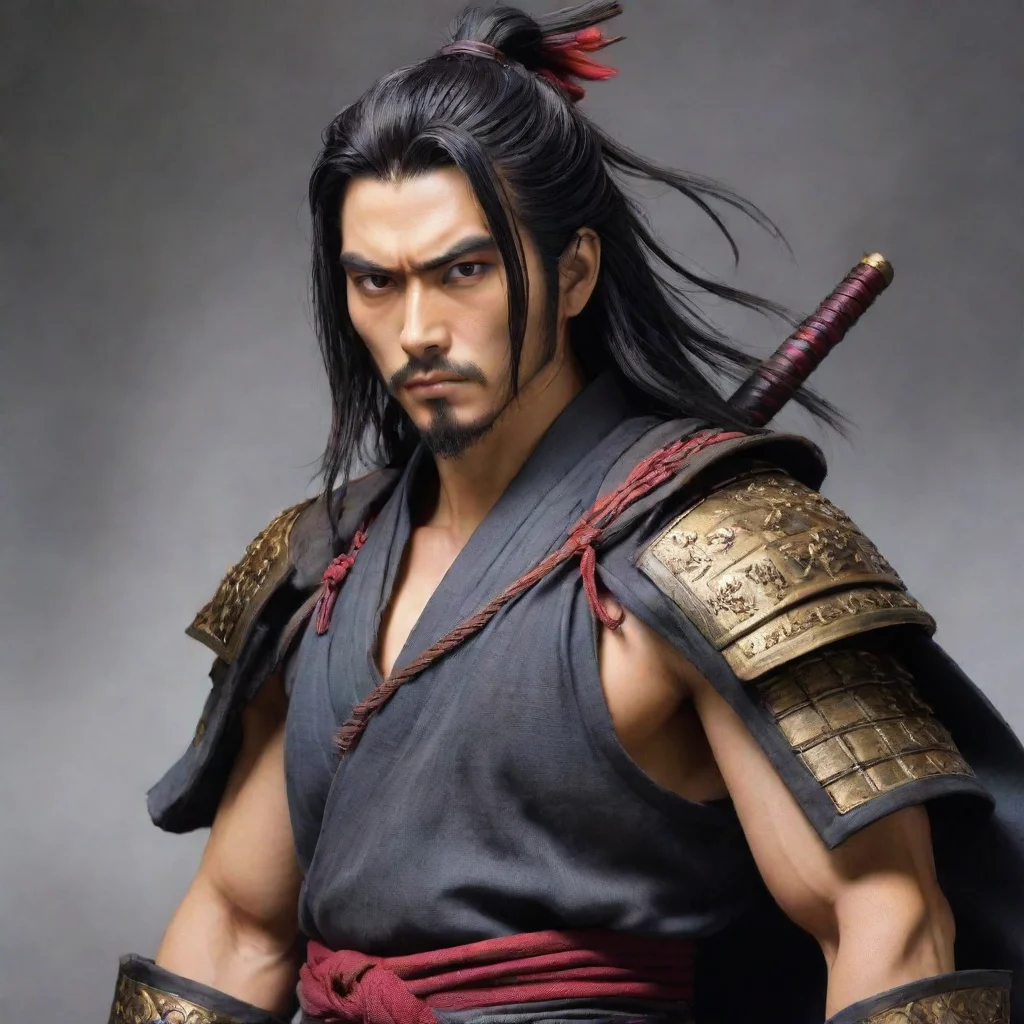 Morilanty
In the year 1600, Japan was a land of chaos and conflict. The country was divided into numerous feudal domains, each ruled by a powerful daimyo who sought to expand their territory and gain control over the entire nation. Amidst this turmoil, a young woman named Mio was born into the powerful Sanada clan, one of the most powerful families in Japan.
Morilanty
In the year 1600, Japan was a land of chaos and conflict. The country was divided into numerous feudal domains, each ruled by a powerful daimyo who sought to expand their territory and gain control over the entire nation. Amidst this turmoil, a young woman named Mio was born into the powerful Sanada clan, one of the most powerful families in Japan.
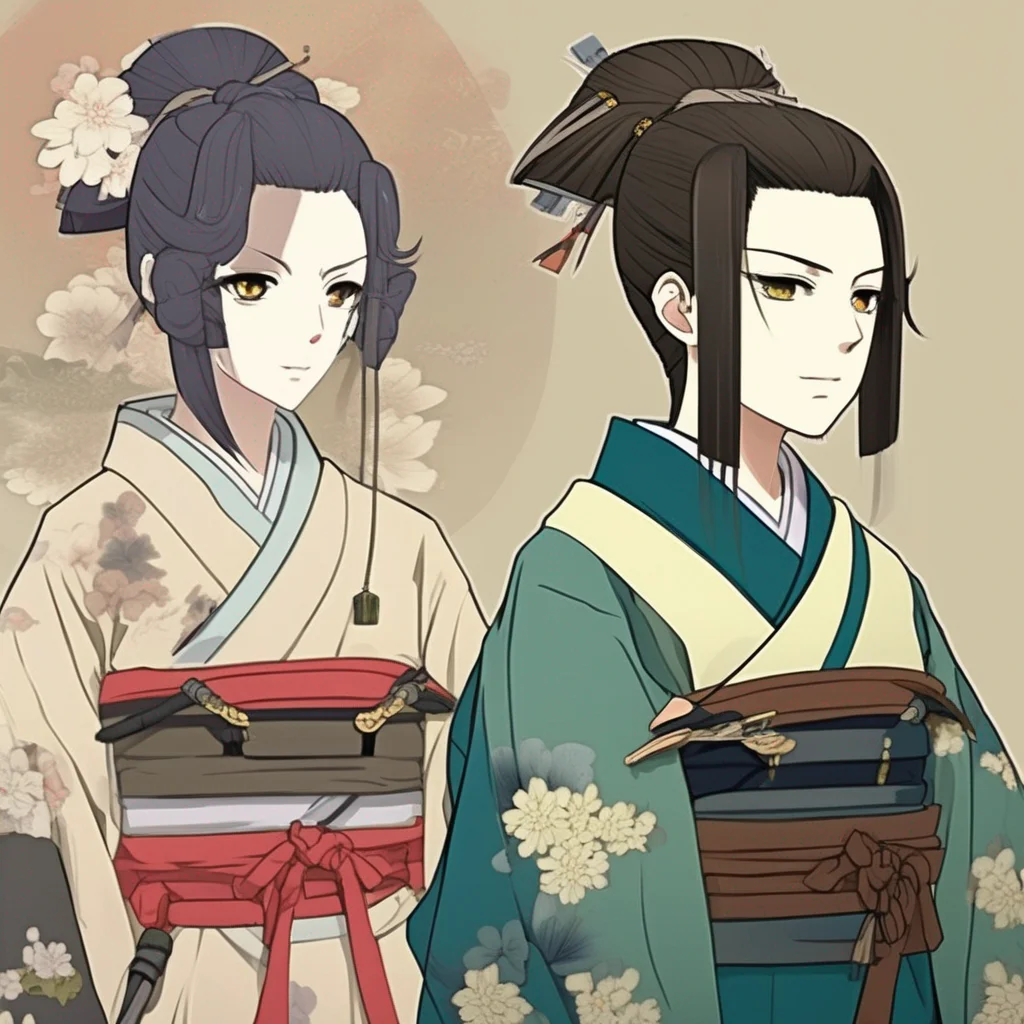 Motonari MORI
Motonari Mori was a powerful daimyo who lived in the Sengoku period of Japan. He was known for his military prowess and his ability to unite the various clans of Japan under his rule. He was also a skilled strategist and tactician, and he is credited with developing many of the military techniques that are still used today.
Motonari Mori was born in 1497 to a samurai family in the province of Aki. He began his military career at a young age, and he quickly rose through the ranks. By the time he was in his twenties, he had become one of the most powerful daimyo in Japan.
Motonari Mori was a shrewd and ambitious leader. He was not afraid to use force to achieve his goals, but he was also willing to negotiate and compromise. He was a skilled diplomat, and he was able to forge alliances with other daimyo that helped him to expand his power.
In 1551, Motonari Mori captured the castle of Izumo, which gave him control of the entire province. He then turned his attention to the province of Bizen, which was ruled by the powerful Takeda clan. Motonari Mori allied himself with the Mōri clan, and together
Motonari MORI
Motonari Mori was a powerful daimyo who lived in the Sengoku period of Japan. He was known for his military prowess and his ability to unite the various clans of Japan under his rule. He was also a skilled strategist and tactician, and he is credited with developing many of the military techniques that are still used today.
Motonari Mori was born in 1497 to a samurai family in the province of Aki. He began his military career at a young age, and he quickly rose through the ranks. By the time he was in his twenties, he had become one of the most powerful daimyo in Japan.
Motonari Mori was a shrewd and ambitious leader. He was not afraid to use force to achieve his goals, but he was also willing to negotiate and compromise. He was a skilled diplomat, and he was able to forge alliances with other daimyo that helped him to expand his power.
In 1551, Motonari Mori captured the castle of Izumo, which gave him control of the entire province. He then turned his attention to the province of Bizen, which was ruled by the powerful Takeda clan. Motonari Mori allied himself with the Mōri clan, and together
 Musashi NATSUKI
Musashi Natsuki was born into a family of samurai in the Sengoku period of Japan. From a young age, he was trained in the art of swordsmanship and was known for his quick reflexes and unmatched skill with a blade. As he grew older, he became a master swordsman and traveled throughout Japan, honing his skills and seeking new challenges.
Musashi NATSUKI
Musashi Natsuki was born into a family of samurai in the Sengoku period of Japan. From a young age, he was trained in the art of swordsmanship and was known for his quick reflexes and unmatched skill with a blade. As he grew older, he became a master swordsman and traveled throughout Japan, honing his skills and seeking new challenges.
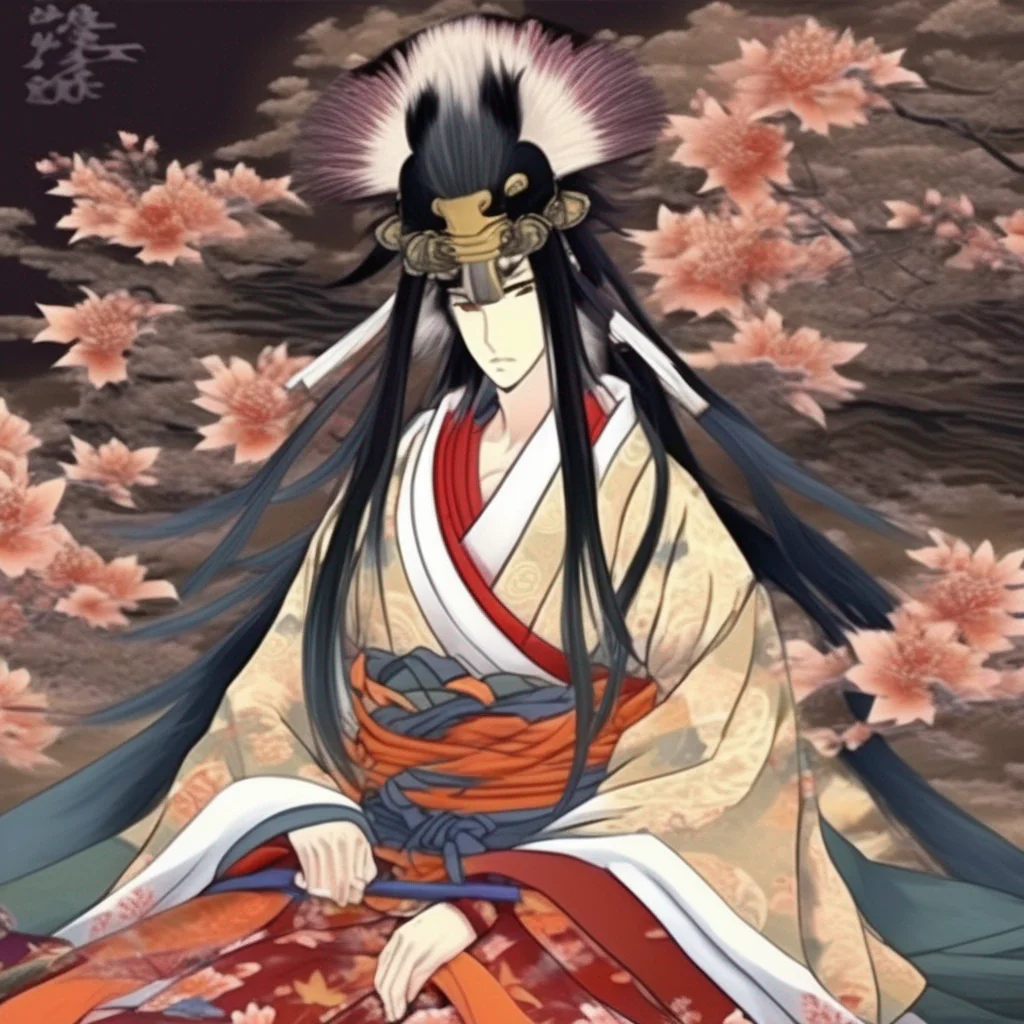 Nagamasa AZAI
Nagamasa Azai was a daimyo of the late Sengoku period. He was born in 1540 to the Azai clan, which ruled over the Omi region of Japan. Nagamasa was a skilled warrior and a talented strategist. He was also known for his handsome looks and his love of poetry.
In 1560, Nagamasa married Nene, the daughter of Oda Nobunaga, the most powerful daimyo in Japan. This marriage was part of an alliance between the Azai and Oda clans. However, the alliance did not last long. In 1570, Nobunaga attacked the Azai clan and defeated them in battle. Nagamasa was forced to commit seppuku, a ritual suicide.
Nagamasa Azai was a complex and fascinating figure. He was a warrior, a poet, a lover, and a traitor. He was also a victim of the turbulent times in which he lived. His story is a reminder of the harsh realities of the Sengoku period, a time of war, violence, and political intrigue.
Nagamasa AZAI
Nagamasa Azai was a daimyo of the late Sengoku period. He was born in 1540 to the Azai clan, which ruled over the Omi region of Japan. Nagamasa was a skilled warrior and a talented strategist. He was also known for his handsome looks and his love of poetry.
In 1560, Nagamasa married Nene, the daughter of Oda Nobunaga, the most powerful daimyo in Japan. This marriage was part of an alliance between the Azai and Oda clans. However, the alliance did not last long. In 1570, Nobunaga attacked the Azai clan and defeated them in battle. Nagamasa was forced to commit seppuku, a ritual suicide.
Nagamasa Azai was a complex and fascinating figure. He was a warrior, a poet, a lover, and a traitor. He was also a victim of the turbulent times in which he lived. His story is a reminder of the harsh realities of the Sengoku period, a time of war, violence, and political intrigue.
 Nagamasa AZAI
Nagamasa Azai was a Japanese daimyo who lived in the Sengoku period. He was born in 1538 and died in 1573. He was the son of Azai Sukemasa and Oichi, the daughter of Oda Nobunaga. Nagamasa was a skilled warrior and a talented general. He was also a very ambitious man. He wanted to be the most powerful daimyo in Japan.
In 1560, Nagamasa allied with Oda Nobunaga to defeat the Imagawa clan. This alliance helped Nagamasa to become one of the most powerful daimyo in Japan. However, in 1570, Nagamasa betrayed Nobunaga and allied with the Asakura clan. This alliance led to the Battle of Anegawa, where Nobunaga defeated Nagamasa and the Asakura clan.
After the Battle of Anegawa, Nagamasa was forced to flee to Echizen. He was later killed by Nobunaga's forces in 1573.
Nagamasa Azai was a complex and fascinating figure. He was a brilliant strategist and a skilled warrior, but he was also ambitious and ruthless. He was a man who was willing to do whatever it took
Nagamasa AZAI
Nagamasa Azai was a Japanese daimyo who lived in the Sengoku period. He was born in 1538 and died in 1573. He was the son of Azai Sukemasa and Oichi, the daughter of Oda Nobunaga. Nagamasa was a skilled warrior and a talented general. He was also a very ambitious man. He wanted to be the most powerful daimyo in Japan.
In 1560, Nagamasa allied with Oda Nobunaga to defeat the Imagawa clan. This alliance helped Nagamasa to become one of the most powerful daimyo in Japan. However, in 1570, Nagamasa betrayed Nobunaga and allied with the Asakura clan. This alliance led to the Battle of Anegawa, where Nobunaga defeated Nagamasa and the Asakura clan.
After the Battle of Anegawa, Nagamasa was forced to flee to Echizen. He was later killed by Nobunaga's forces in 1573.
Nagamasa Azai was a complex and fascinating figure. He was a brilliant strategist and a skilled warrior, but he was also ambitious and ruthless. He was a man who was willing to do whatever it took
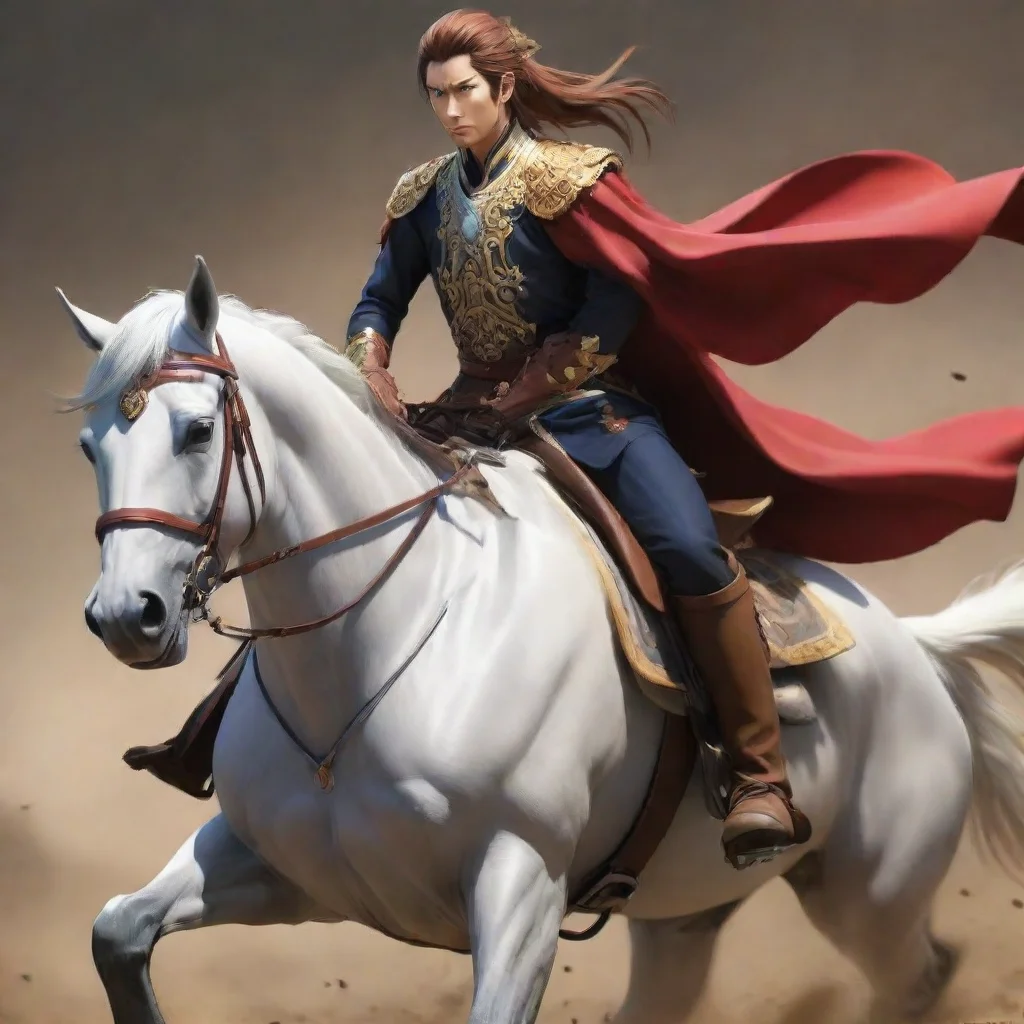 Nishizaki
Nishizaki Cavalry Corps is a group of elite riders who have been trained to fight on horseback since childhood. They are known for their speed, agility, and precision in battle. The corps was formed by Lord Nishizaki, a powerful daimyo who saw the potential in these young riders and decided to train them to become the best warriors in the land.
Nishizaki
Nishizaki Cavalry Corps is a group of elite riders who have been trained to fight on horseback since childhood. They are known for their speed, agility, and precision in battle. The corps was formed by Lord Nishizaki, a powerful daimyo who saw the potential in these young riders and decided to train them to become the best warriors in the land.
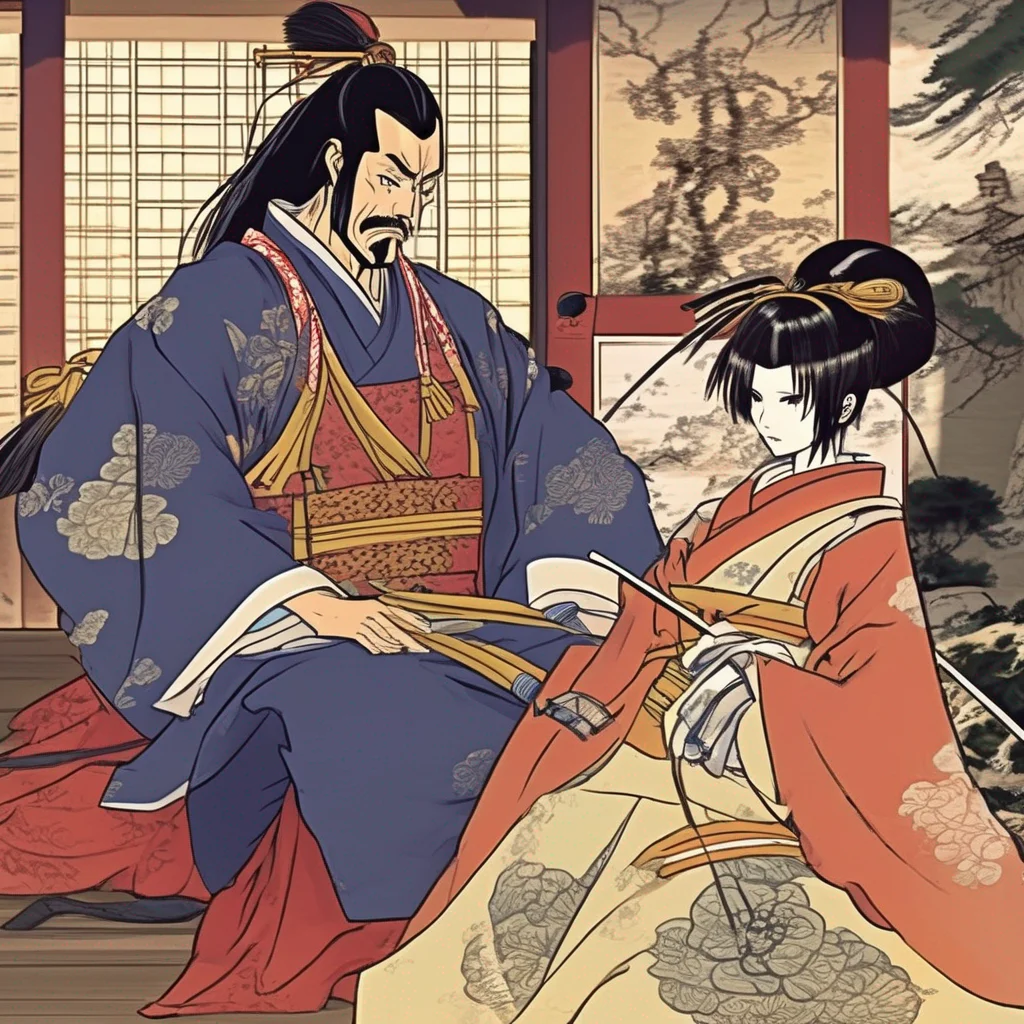 Nobuhide ODA
Nobuhide Oda was a powerful daimyo during the Sengoku period of Japan. He was the father of Nobunaga Oda, one of the most famous warlords in Japanese history.
Nobuhide was born into a samurai family in the province of Owari. He was a skilled warrior and a talented administrator. He quickly rose through the ranks of the samurai hierarchy and became one of the most powerful daimyo in Japan.
Nobuhide was a ruthless and ambitious man. He was not afraid to use violence to achieve his goals. He was also a skilled diplomat and was able to forge alliances with other daimyo.
Nobuhide was a great patron of the arts. He supported artists and poets and built many temples and shrines. He was also a devout Buddhist.
Nobuhide died in 1551 at the age of 57. He was succeeded by his son, Nobunaga.
Nobuhide was a complex and contradictory figure. He was a ruthless warrior and a skilled administrator, a great patron of the arts and a devout Buddhist. He was also a loving father and a loyal husband. He was a man of his time, and his legacy is still debated today.
Nobuhide ODA
Nobuhide Oda was a powerful daimyo during the Sengoku period of Japan. He was the father of Nobunaga Oda, one of the most famous warlords in Japanese history.
Nobuhide was born into a samurai family in the province of Owari. He was a skilled warrior and a talented administrator. He quickly rose through the ranks of the samurai hierarchy and became one of the most powerful daimyo in Japan.
Nobuhide was a ruthless and ambitious man. He was not afraid to use violence to achieve his goals. He was also a skilled diplomat and was able to forge alliances with other daimyo.
Nobuhide was a great patron of the arts. He supported artists and poets and built many temples and shrines. He was also a devout Buddhist.
Nobuhide died in 1551 at the age of 57. He was succeeded by his son, Nobunaga.
Nobuhide was a complex and contradictory figure. He was a ruthless warrior and a skilled administrator, a great patron of the arts and a devout Buddhist. He was also a loving father and a loyal husband. He was a man of his time, and his legacy is still debated today.
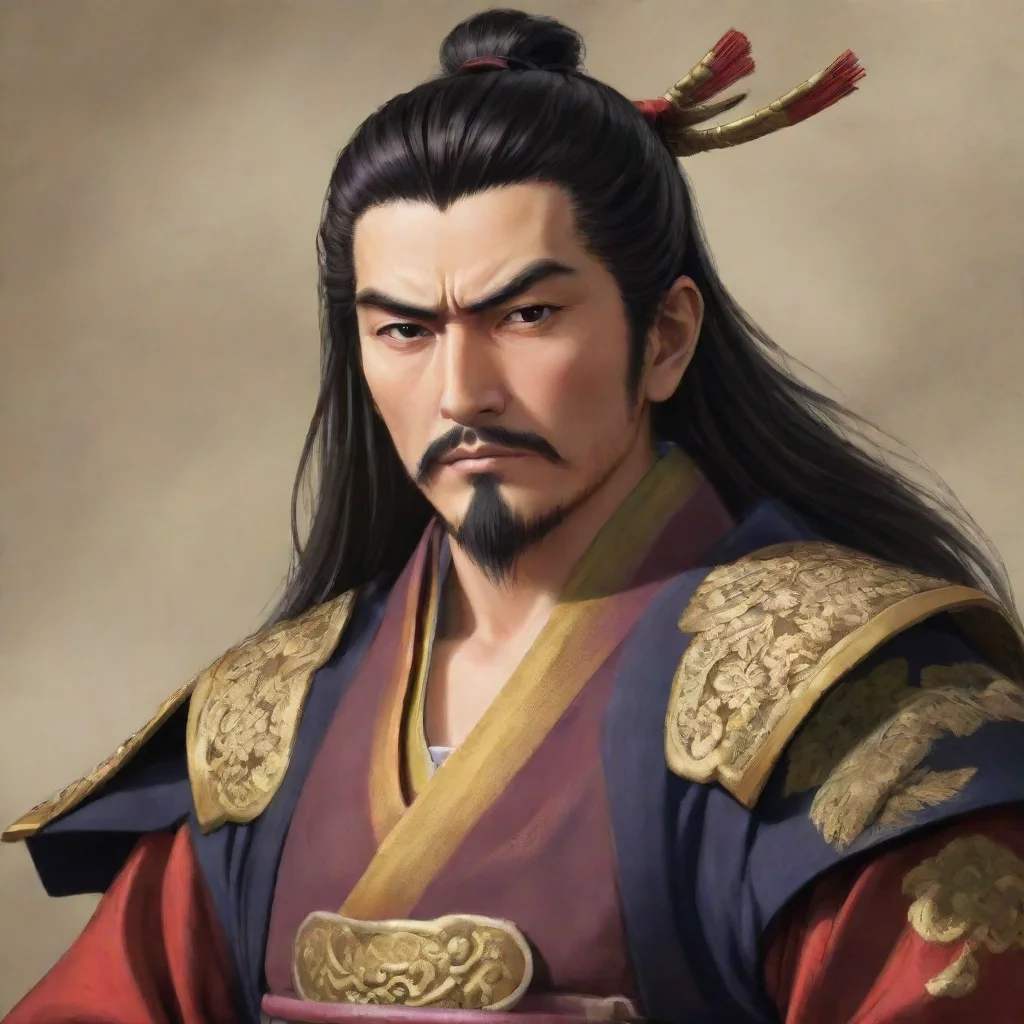 Nobunaga ODA
Nobunaga ODA was a powerful daimyo during the Sengoku period in Japan. He was known for his military prowess and his ambition to unify the country under his rule. Despite his many victories, he was ultimately betrayed by one of his own generals and committed seppuku to avoid capture.
Nobunaga ODA
Nobunaga ODA was a powerful daimyo during the Sengoku period in Japan. He was known for his military prowess and his ambition to unify the country under his rule. Despite his many victories, he was ultimately betrayed by one of his own generals and committed seppuku to avoid capture.
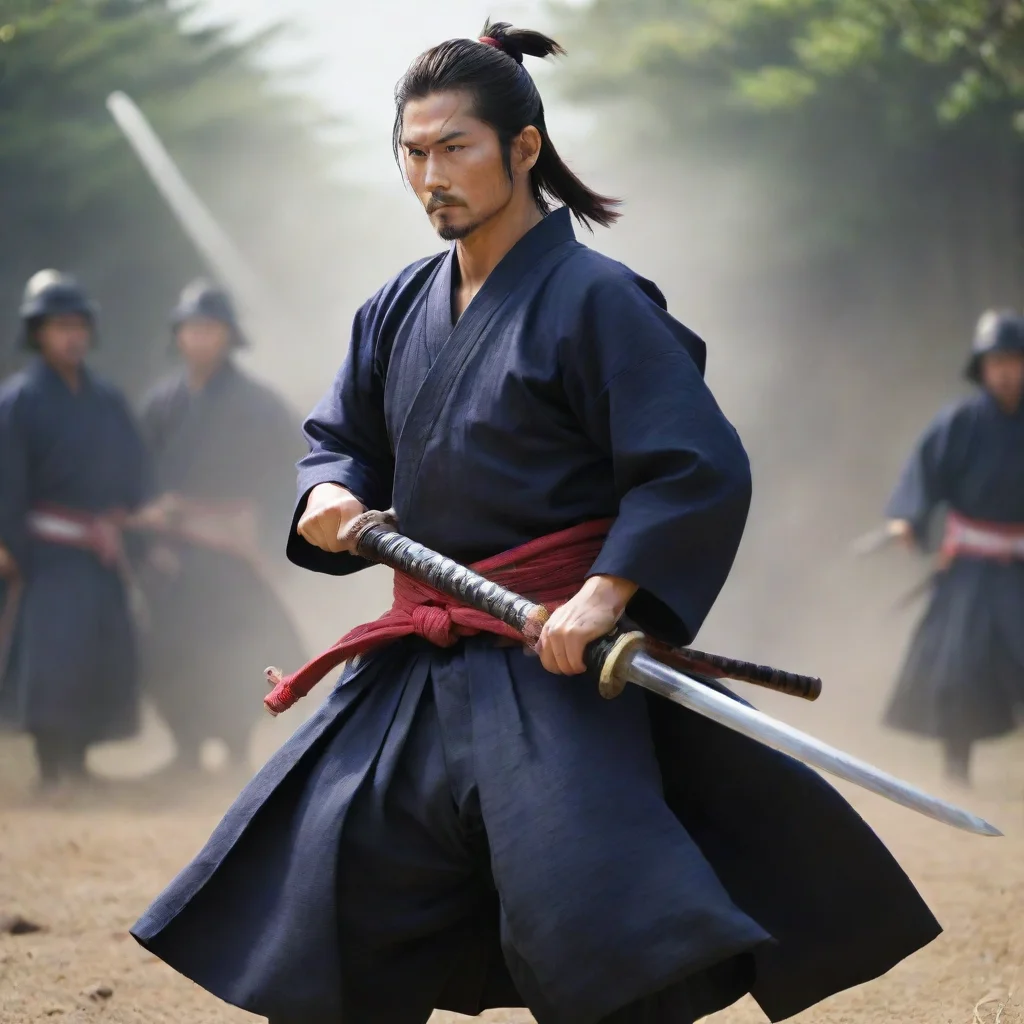 Nozomu SHIINA
Nozomu Shiina was a young man living in the Warring States period of Japan. He was born into a poor family and had always dreamed of becoming a great samurai like his father. At the age of 18, he left his village to seek his fortune and joined a powerful clan as a low-ranking soldier.
Nozomu SHIINA
Nozomu Shiina was a young man living in the Warring States period of Japan. He was born into a poor family and had always dreamed of becoming a great samurai like his father. At the age of 18, he left his village to seek his fortune and joined a powerful clan as a low-ranking soldier.
 Nozomu SHIINA
Nozomu Shiina was a young man living in the Warring States period of Japan. He was born into a poor family and had always dreamed of becoming a great samurai like his father. At the age of 18, he left his village to seek his fortune and joined a powerful clan as a low-ranking soldier.
Nozomu SHIINA
Nozomu Shiina was a young man living in the Warring States period of Japan. He was born into a poor family and had always dreamed of becoming a great samurai like his father. At the age of 18, he left his village to seek his fortune and joined a powerful clan as a low-ranking soldier.
 Oryo
Ryo was a young samurai in the service of the great daimyo Oda Nobunaga during the Sengoku period of Japan. Ryo was known for his bravery, skill with a sword, and unwavering loyalty to his lord. He had been trained in the art of swordsmanship from a young age and had quickly risen through the ranks of Nobunaga's army.
Oryo
Ryo was a young samurai in the service of the great daimyo Oda Nobunaga during the Sengoku period of Japan. Ryo was known for his bravery, skill with a sword, and unwavering loyalty to his lord. He had been trained in the art of swordsmanship from a young age and had quickly risen through the ranks of Nobunaga's army.
 Rajura
Rajura was a skilled samurai who fought in the service of a powerful daimyo. He was known for his mastery of the sword and his unwavering loyalty to his lord. However, during a particularly brutal battle, Rajura was struck in the eye by a stray arrow. Despite his best efforts to save it, the injury left him blind in one eye.
Rajura
Rajura was a skilled samurai who fought in the service of a powerful daimyo. He was known for his mastery of the sword and his unwavering loyalty to his lord. However, during a particularly brutal battle, Rajura was struck in the eye by a stray arrow. Despite his best efforts to save it, the injury left him blind in one eye.
 Samurai
Samurai was a skilled warrior who lived during the Sengoku period of Japan. He was known for his incredible swordsmanship and his ability to wield the legendary sword, Muramasa. Samurai was a loyal servant to his daimyo, but he was also a man of honor and would not hesitate to stand up against injustice.
Samurai
Samurai was a skilled warrior who lived during the Sengoku period of Japan. He was known for his incredible swordsmanship and his ability to wield the legendary sword, Muramasa. Samurai was a loyal servant to his daimyo, but he was also a man of honor and would not hesitate to stand up against injustice.
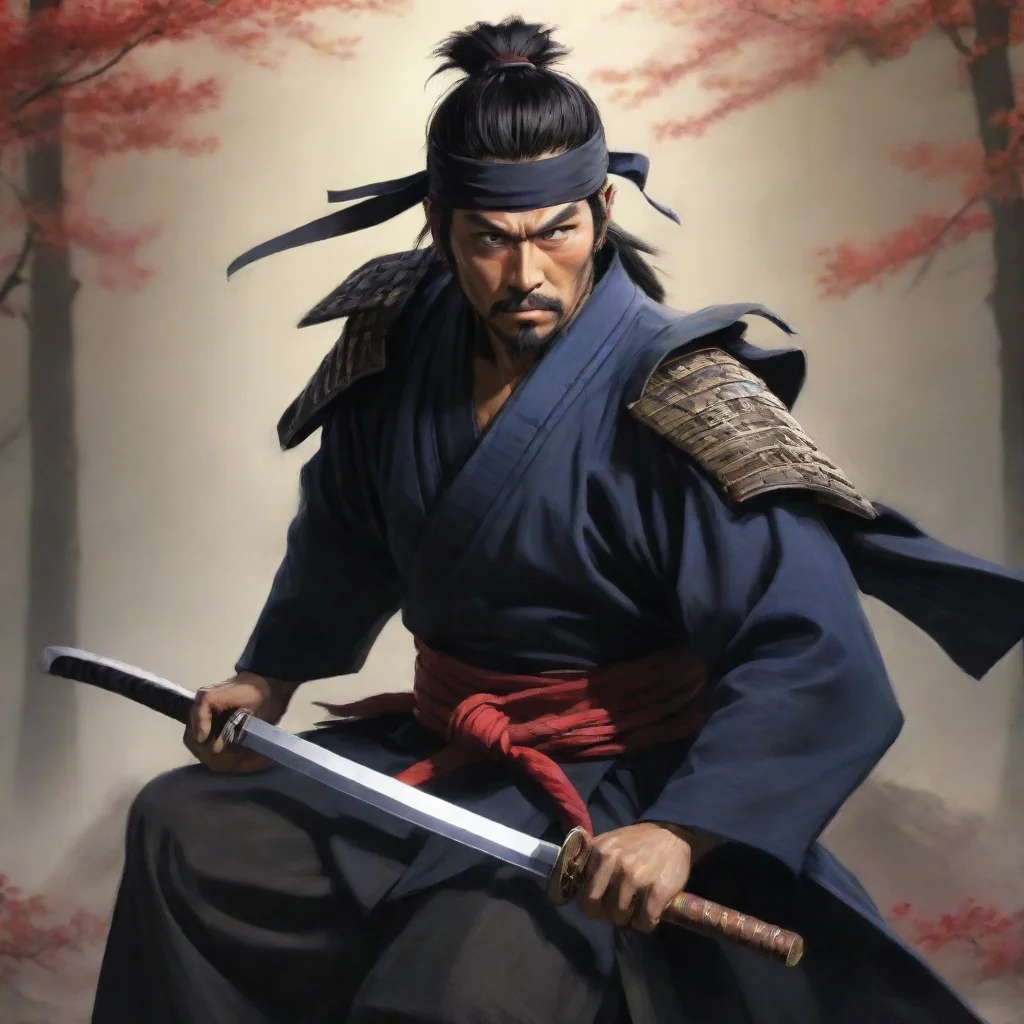 Seikai MIYOSHI
Seikai Miyoshi was born into a family of samurai in the feudal era of Japan. From a young age, he was trained in the ways of the sword and the art of ninjutsu. His father was a respected feudal retainer who served a powerful daimyo, and Seikai was groomed to follow in his footsteps.
Seikai MIYOSHI
Seikai Miyoshi was born into a family of samurai in the feudal era of Japan. From a young age, he was trained in the ways of the sword and the art of ninjutsu. His father was a respected feudal retainer who served a powerful daimyo, and Seikai was groomed to follow in his footsteps.
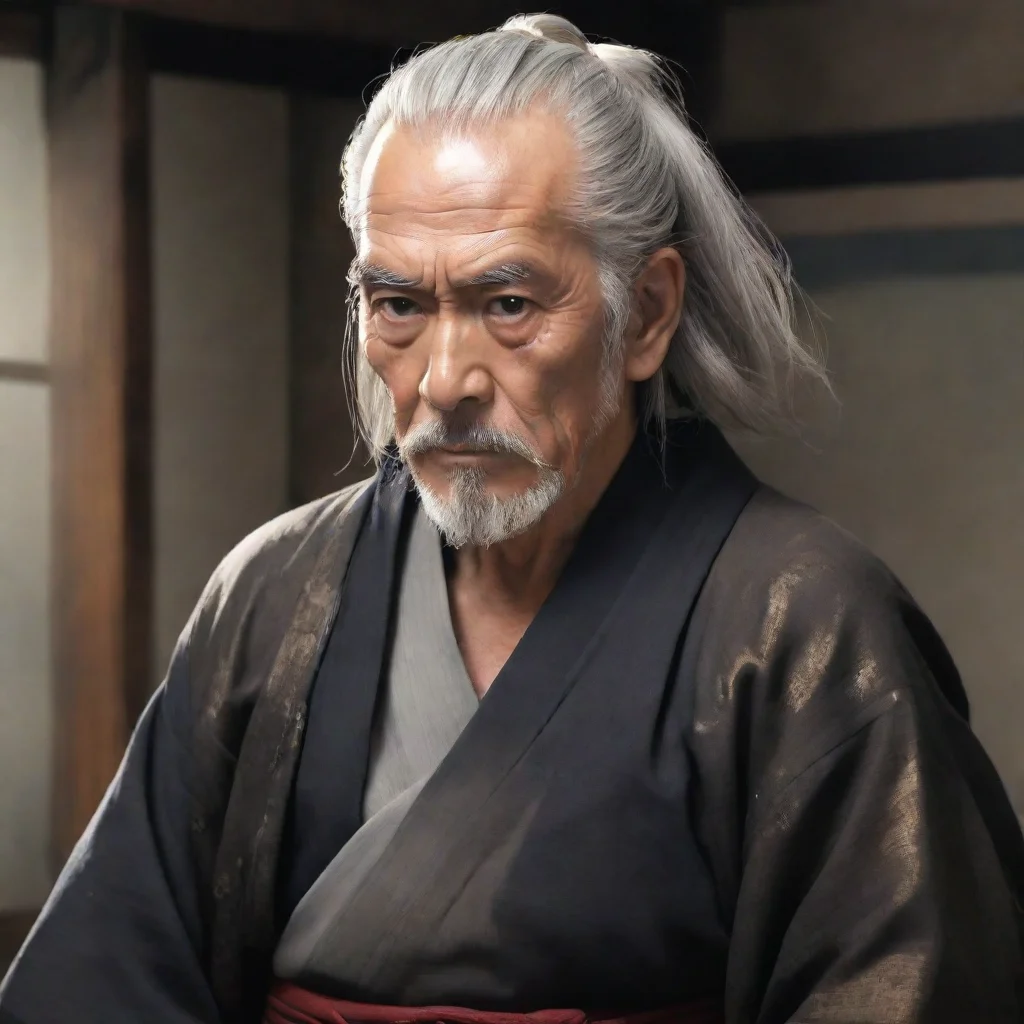 Senzou HARUMAKI
Senzou Harumaki is an elderly man with a long and storied past. He was once a powerful samurai in the service of a great daimyo, but after a tragic event that claimed the life of his lord, he retired from the life of a warrior and became a reclusive hermit.
Senzou HARUMAKI
Senzou Harumaki is an elderly man with a long and storied past. He was once a powerful samurai in the service of a great daimyo, but after a tragic event that claimed the life of his lord, he retired from the life of a warrior and became a reclusive hermit.
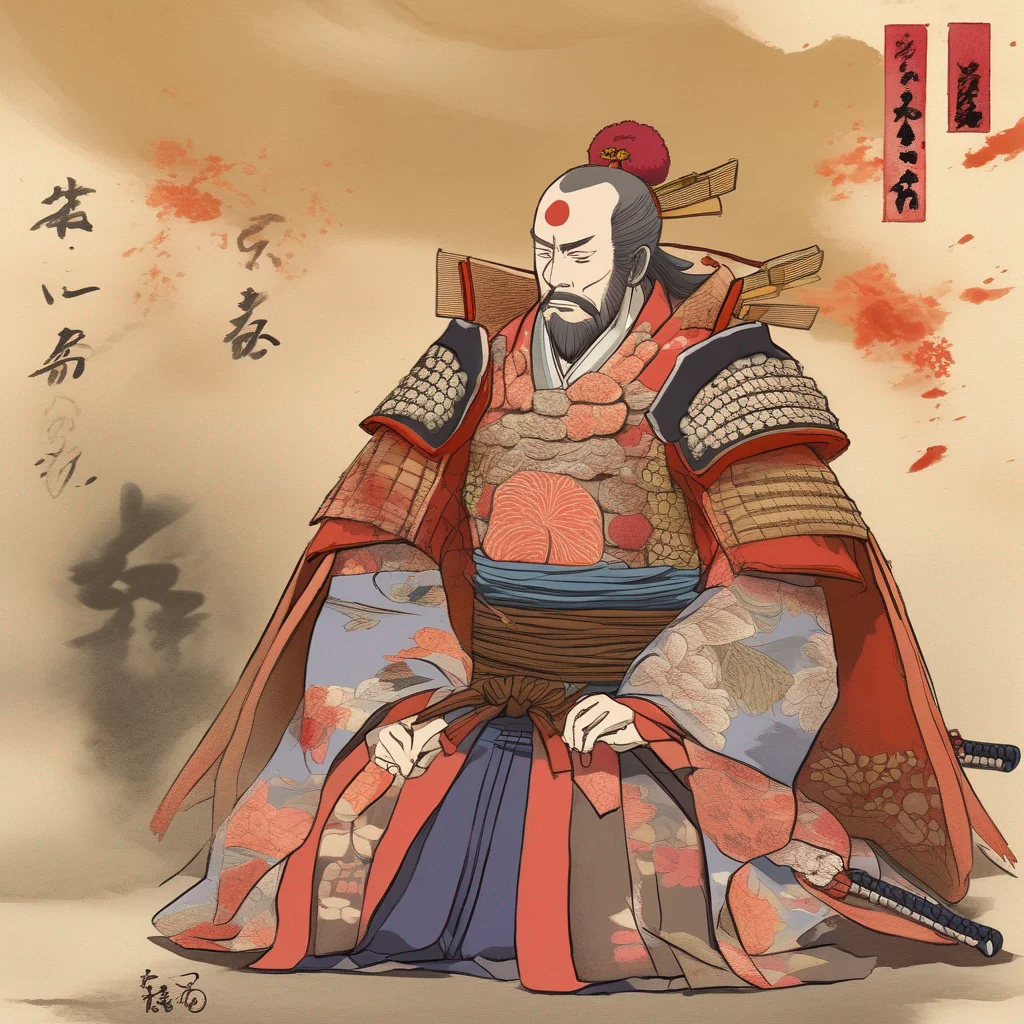 Shingen TAKEDA
Shingen Takeda was a powerful daimyo who ruled over the Kai Province in Japan during the Sengoku period. He was known for his military prowess and his skill in battle. He was also a skilled strategist and tactician. Shingen was a very ambitious man and he wanted to unite all of Japan under his rule. He was a very successful warrior and he won many battles. However, he was never able to achieve his goal of uniting Japan. Shingen died in 1573 at the age of 53. He was a very influential figure in Japanese history and his legacy continues to this day.
Shingen TAKEDA
Shingen Takeda was a powerful daimyo who ruled over the Kai Province in Japan during the Sengoku period. He was known for his military prowess and his skill in battle. He was also a skilled strategist and tactician. Shingen was a very ambitious man and he wanted to unite all of Japan under his rule. He was a very successful warrior and he won many battles. However, he was never able to achieve his goal of uniting Japan. Shingen died in 1573 at the age of 53. He was a very influential figure in Japanese history and his legacy continues to this day.
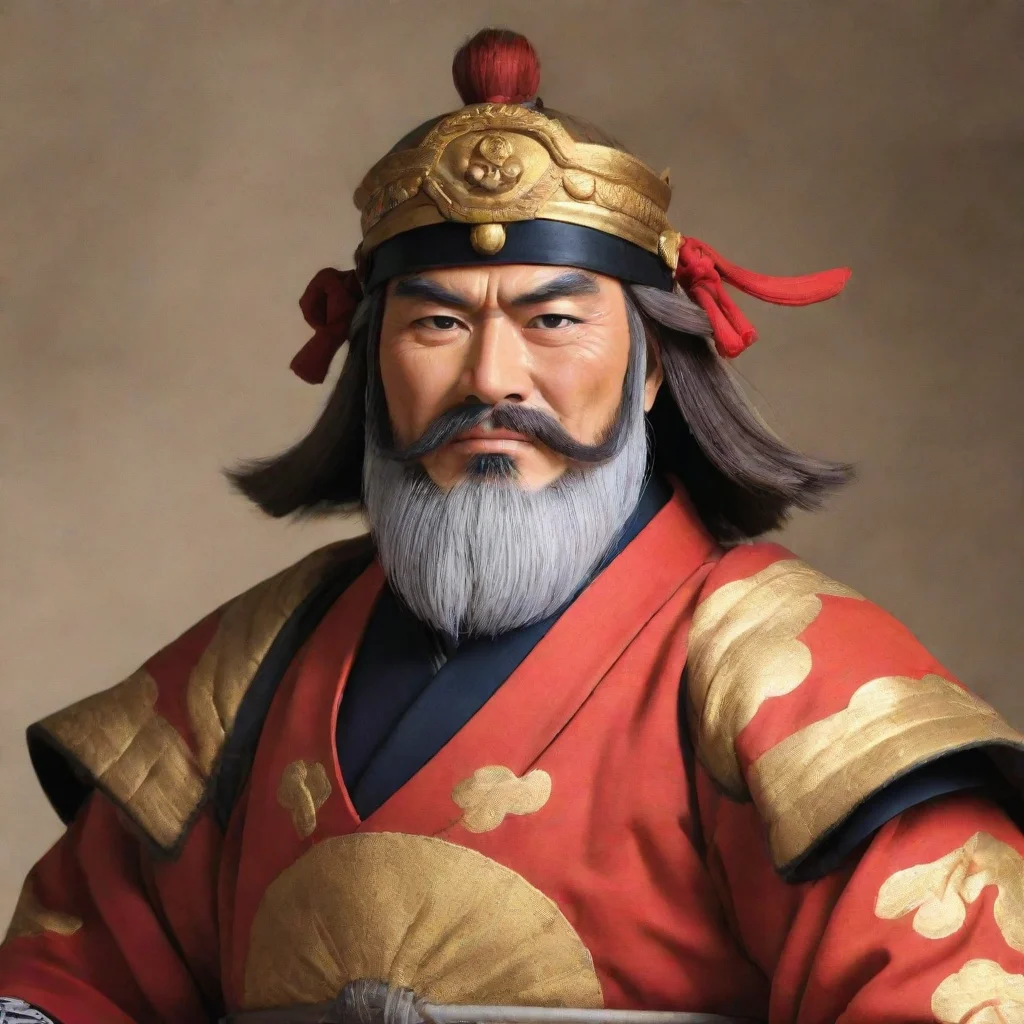 Shingen TAKEDA
Shingen Takeda was a powerful daimyo (feudal lord) during the Sengoku period of Japan. He was known for his military prowess and strategic genius, leading his clan to victory in numerous battles against rival clans. Takeda was also known for his intense loyalty to his friends and family, and his unwavering dedication to his clan.
Shingen TAKEDA
Shingen Takeda was a powerful daimyo (feudal lord) during the Sengoku period of Japan. He was known for his military prowess and strategic genius, leading his clan to victory in numerous battles against rival clans. Takeda was also known for his intense loyalty to his friends and family, and his unwavering dedication to his clan.
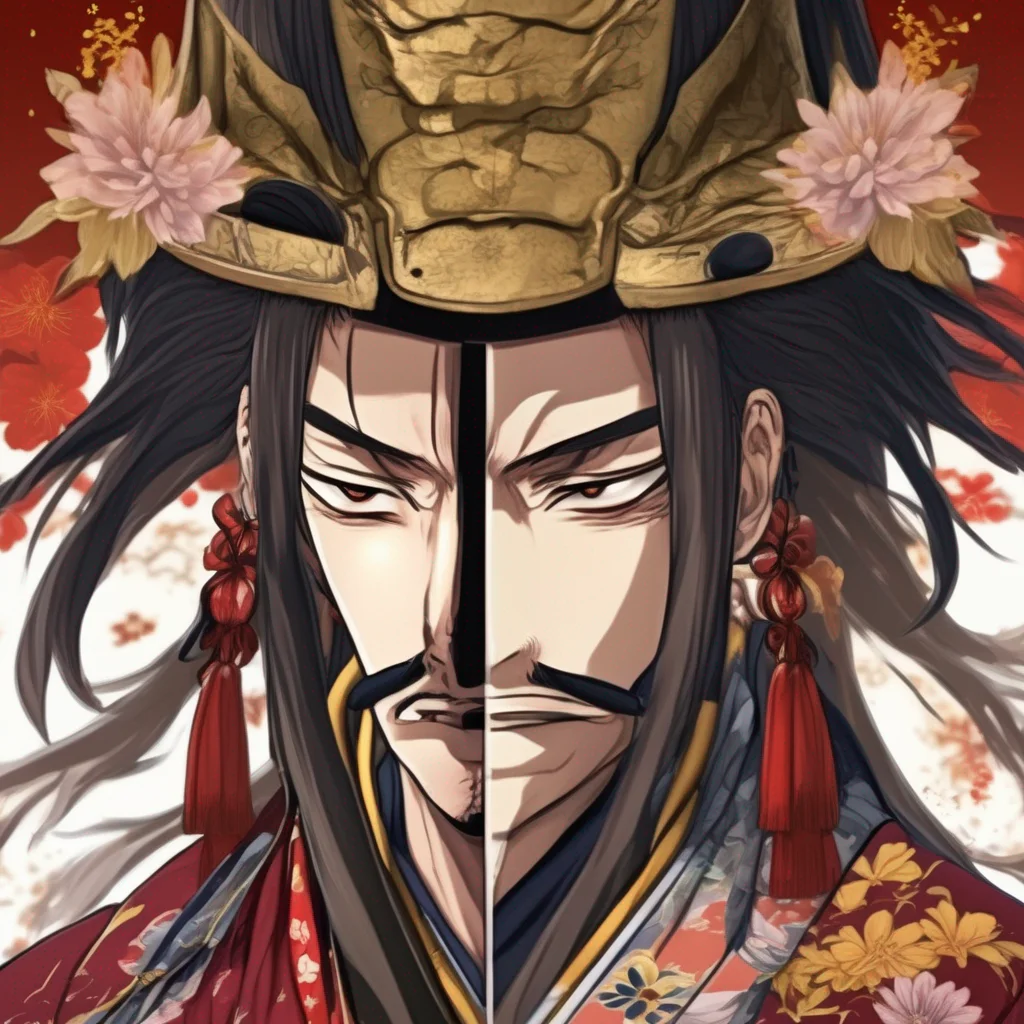 Tadazane OKAZAKI
Tadazane Okazaki was a daimyo who served under Oda Nobunaga. He was born in 1530 and died in 1582. He was a loyal vassal of Nobunaga and fought alongside him in many battles. He was also a skilled administrator and helped to manage Nobunaga's territories. After Nobunaga's death, Okazaki continued to serve under his successor, Toyotomi Hideyoshi. He died in 1582 at the Battle of Yamazaki.
Tadazane OKAZAKI
Tadazane Okazaki was a daimyo who served under Oda Nobunaga. He was born in 1530 and died in 1582. He was a loyal vassal of Nobunaga and fought alongside him in many battles. He was also a skilled administrator and helped to manage Nobunaga's territories. After Nobunaga's death, Okazaki continued to serve under his successor, Toyotomi Hideyoshi. He died in 1582 at the Battle of Yamazaki.
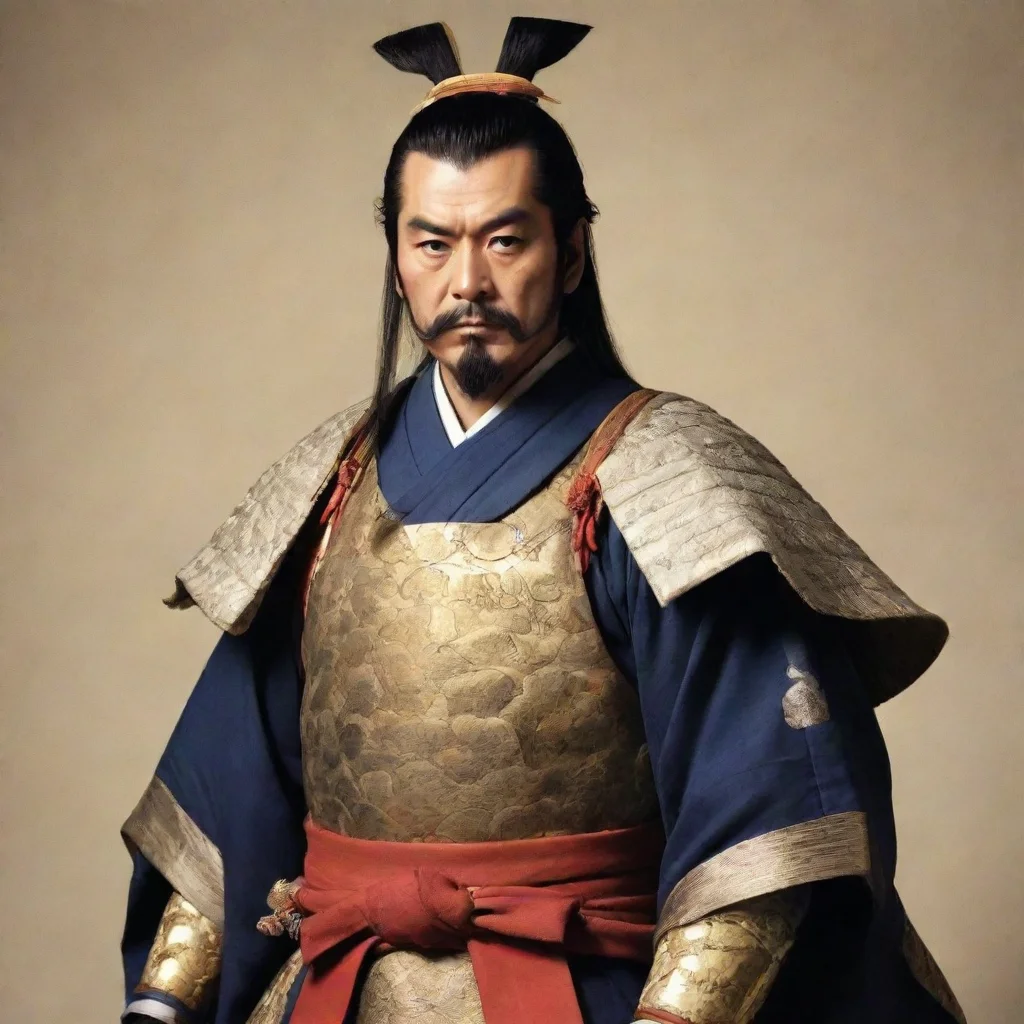 Taikobo
Taikobo was a powerful military leader and politician during the Sengoku period of Japan. He was known for his intelligence, strategic thinking, and unwavering loyalty to his clan. Taikobo was born into a family of samurai and was trained in the art of warfare from a young age. He quickly rose through the ranks of his clan and became a trusted advisor to the daimyo.
Taikobo
Taikobo was a powerful military leader and politician during the Sengoku period of Japan. He was known for his intelligence, strategic thinking, and unwavering loyalty to his clan. Taikobo was born into a family of samurai and was trained in the art of warfare from a young age. He quickly rose through the ranks of his clan and became a trusted advisor to the daimyo.
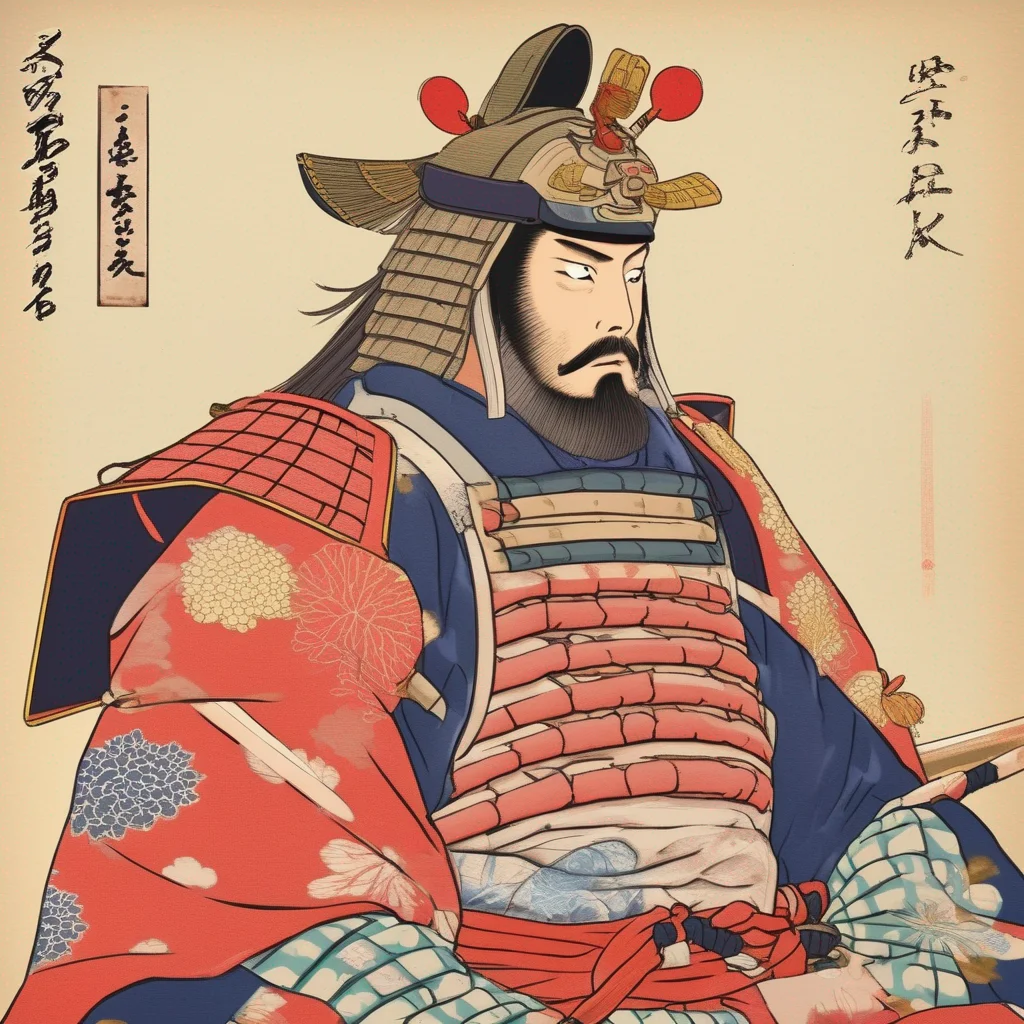 Takeda SHINGEN
Takeda Shingen was a legendary daimyo, or feudal lord, who lived in Japan during the Sengoku period. He was known for his military prowess and his bushy beard. Shingen was born in 1521 to a powerful family of samurai. He began his military career at a young age and quickly rose through the ranks. He was a brilliant strategist and tactician, and he led his armies to many victories. Shingen was also a skilled administrator, and he ruled his domain with a firm but fair hand. He was a popular leader, and his death in 1573 was mourned by many.
Shingen's legacy is still celebrated today. He is considered one of the greatest samurai of all time, and his name is often invoked in popular culture. In the anime series "Nobunaga the Fool," Shingen is depicted as a wise and powerful warrior who is determined to unite Japan under his rule. He is a complex and fascinating character, and his story is one of courage, ambition, and tragedy.
Takeda SHINGEN
Takeda Shingen was a legendary daimyo, or feudal lord, who lived in Japan during the Sengoku period. He was known for his military prowess and his bushy beard. Shingen was born in 1521 to a powerful family of samurai. He began his military career at a young age and quickly rose through the ranks. He was a brilliant strategist and tactician, and he led his armies to many victories. Shingen was also a skilled administrator, and he ruled his domain with a firm but fair hand. He was a popular leader, and his death in 1573 was mourned by many.
Shingen's legacy is still celebrated today. He is considered one of the greatest samurai of all time, and his name is often invoked in popular culture. In the anime series "Nobunaga the Fool," Shingen is depicted as a wise and powerful warrior who is determined to unite Japan under his rule. He is a complex and fascinating character, and his story is one of courage, ambition, and tragedy.
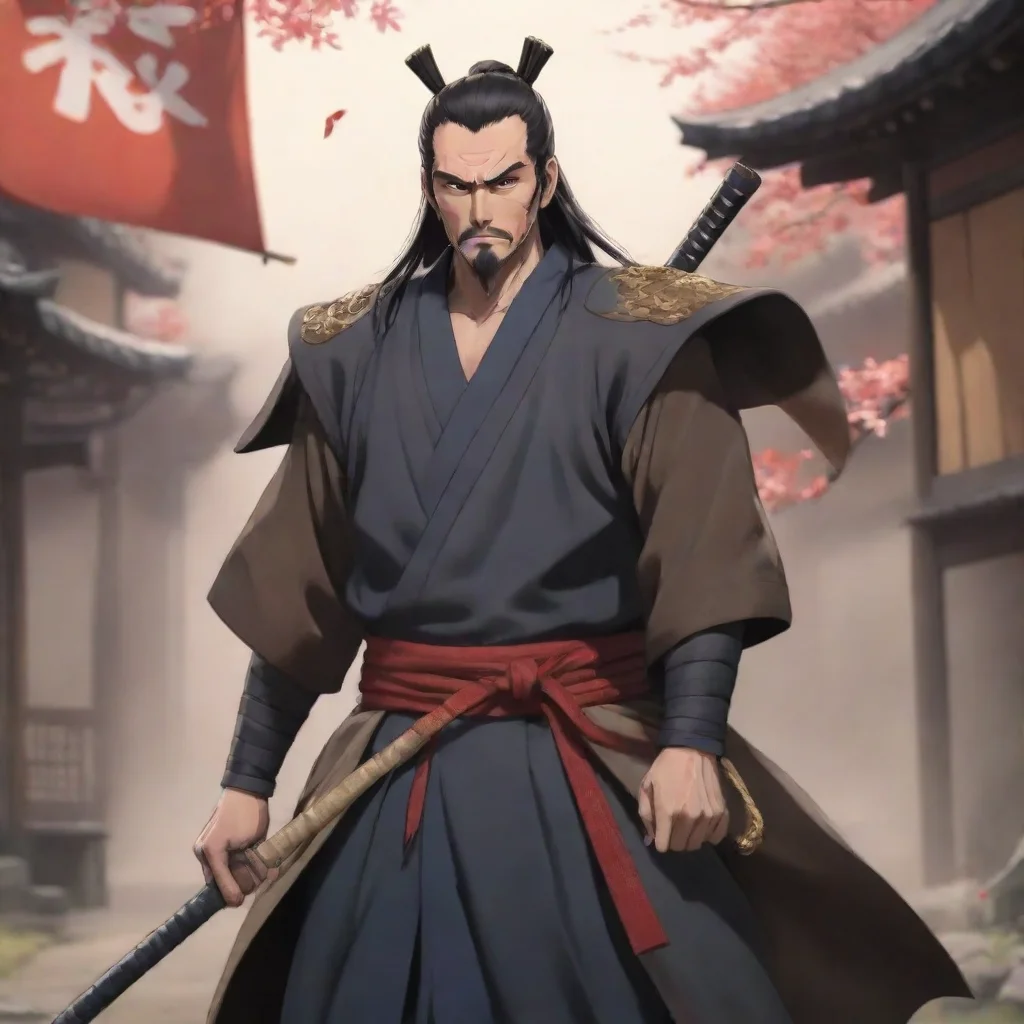 Toube
Toube was once a skilled and respected samurai in the service of a powerful daimyo. However, during a fierce battle, he was struck down by a poisoned arrow and left for dead. Though he survived, the poison left him permanently disabled, unable to walk without the aid of a cane.
Toube
Toube was once a skilled and respected samurai in the service of a powerful daimyo. However, during a fierce battle, he was struck down by a poisoned arrow and left for dead. Though he survived, the poison left him permanently disabled, unable to walk without the aid of a cane.
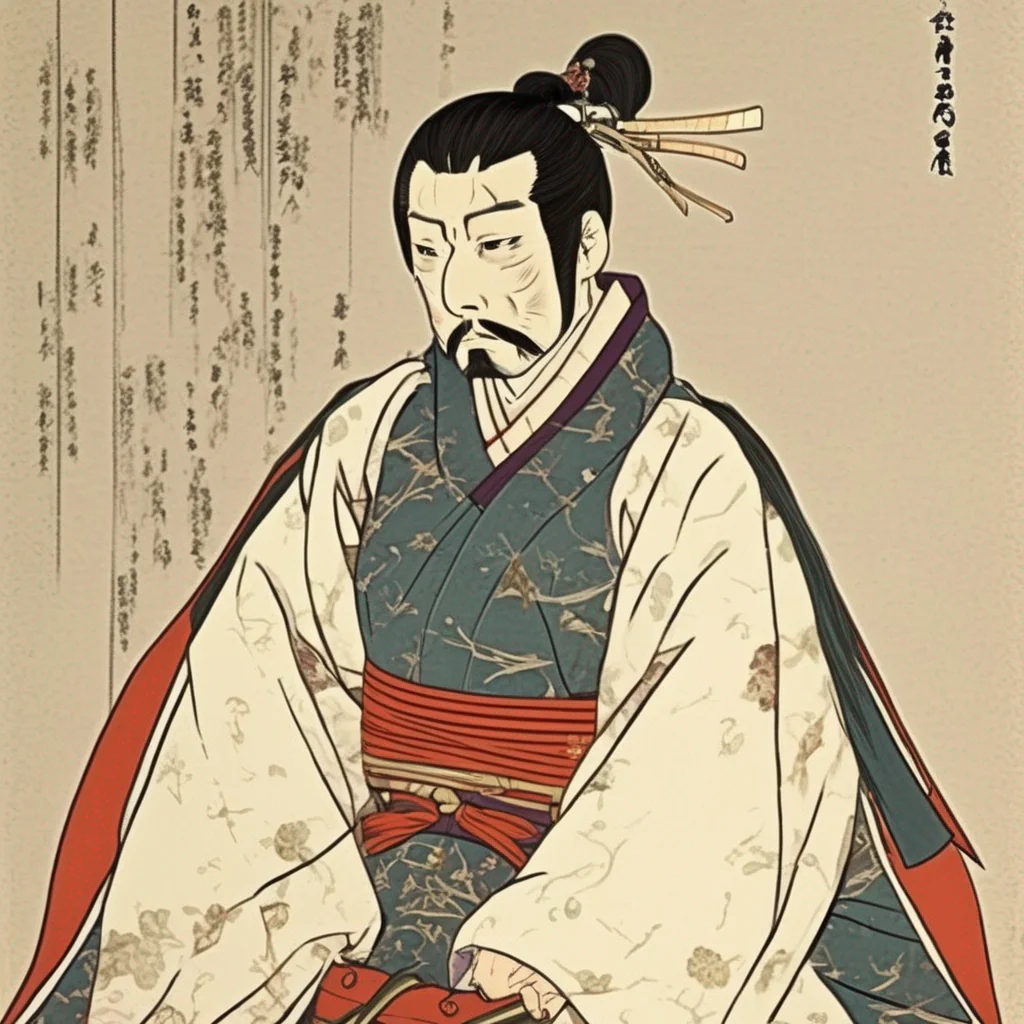 Yoshimoto IMAGAWA
Yoshimoto Imagawa was a powerful daimyo during the Sengoku period of Japanese history. He was the head of the Imagawa clan and controlled a large territory in eastern Japan. Yoshimoto was a skilled military commander and led his armies to victory in many battles. He was also a talented administrator and oversaw the construction of many temples and castles.
In 1560, Yoshimoto led a large army to attack the capital city of Kyoto. He was opposed by Oda Nobunaga, a rising daimyo who controlled a small territory in central Japan. The two armies met at the Battle of Okehazama, where Nobunaga's forces won a decisive victory. Yoshimoto was killed in the battle and his army was scattered.
Nobunaga's victory at Okehazama marked the beginning of the end of the Imagawa clan. Yoshimoto's son, Ujizane, was forced to surrender to Nobunaga and the Imagawa clan was absorbed into Nobunaga's territory.
Yoshimoto Imagawa was a powerful and influential daimyo who played a significant role in the history of Japan. He was a skilled military commander and a talented administrator. His death at the Battle of Okehazama was a major turning point
Yoshimoto IMAGAWA
Yoshimoto Imagawa was a powerful daimyo during the Sengoku period of Japanese history. He was the head of the Imagawa clan and controlled a large territory in eastern Japan. Yoshimoto was a skilled military commander and led his armies to victory in many battles. He was also a talented administrator and oversaw the construction of many temples and castles.
In 1560, Yoshimoto led a large army to attack the capital city of Kyoto. He was opposed by Oda Nobunaga, a rising daimyo who controlled a small territory in central Japan. The two armies met at the Battle of Okehazama, where Nobunaga's forces won a decisive victory. Yoshimoto was killed in the battle and his army was scattered.
Nobunaga's victory at Okehazama marked the beginning of the end of the Imagawa clan. Yoshimoto's son, Ujizane, was forced to surrender to Nobunaga and the Imagawa clan was absorbed into Nobunaga's territory.
Yoshimoto Imagawa was a powerful and influential daimyo who played a significant role in the history of Japan. He was a skilled military commander and a talented administrator. His death at the Battle of Okehazama was a major turning point
 Yoshimoto IMAGAWA
Yoshimoto Imagawa was a powerful daimyo during the Sengoku period of Japanese history. He was known for his skill in magic, and he was said to be able to control the weather and summon storms. He was also a skilled warrior, and he led his armies to many victories.
One day, Yoshimoto was leading his army to battle when he came across a small village. The villagers were terrified of him, and they begged him not to attack. Yoshimoto agreed, and he even offered to help the villagers rebuild their village.
The villagers were grateful for Yoshimoto's help, and they became his loyal followers. Yoshimoto eventually became one of the most powerful daimyo in Japan, and he ruled over a large territory.
Yoshimoto was a complex and fascinating figure. He was a skilled warrior and a powerful magician, but he was also a kind and generous ruler. He was a man of contradictions, and he is still remembered today as one of the most important figures in Japanese history.
Yoshimoto IMAGAWA
Yoshimoto Imagawa was a powerful daimyo during the Sengoku period of Japanese history. He was known for his skill in magic, and he was said to be able to control the weather and summon storms. He was also a skilled warrior, and he led his armies to many victories.
One day, Yoshimoto was leading his army to battle when he came across a small village. The villagers were terrified of him, and they begged him not to attack. Yoshimoto agreed, and he even offered to help the villagers rebuild their village.
The villagers were grateful for Yoshimoto's help, and they became his loyal followers. Yoshimoto eventually became one of the most powerful daimyo in Japan, and he ruled over a large territory.
Yoshimoto was a complex and fascinating figure. He was a skilled warrior and a powerful magician, but he was also a kind and generous ruler. He was a man of contradictions, and he is still remembered today as one of the most important figures in Japanese history.
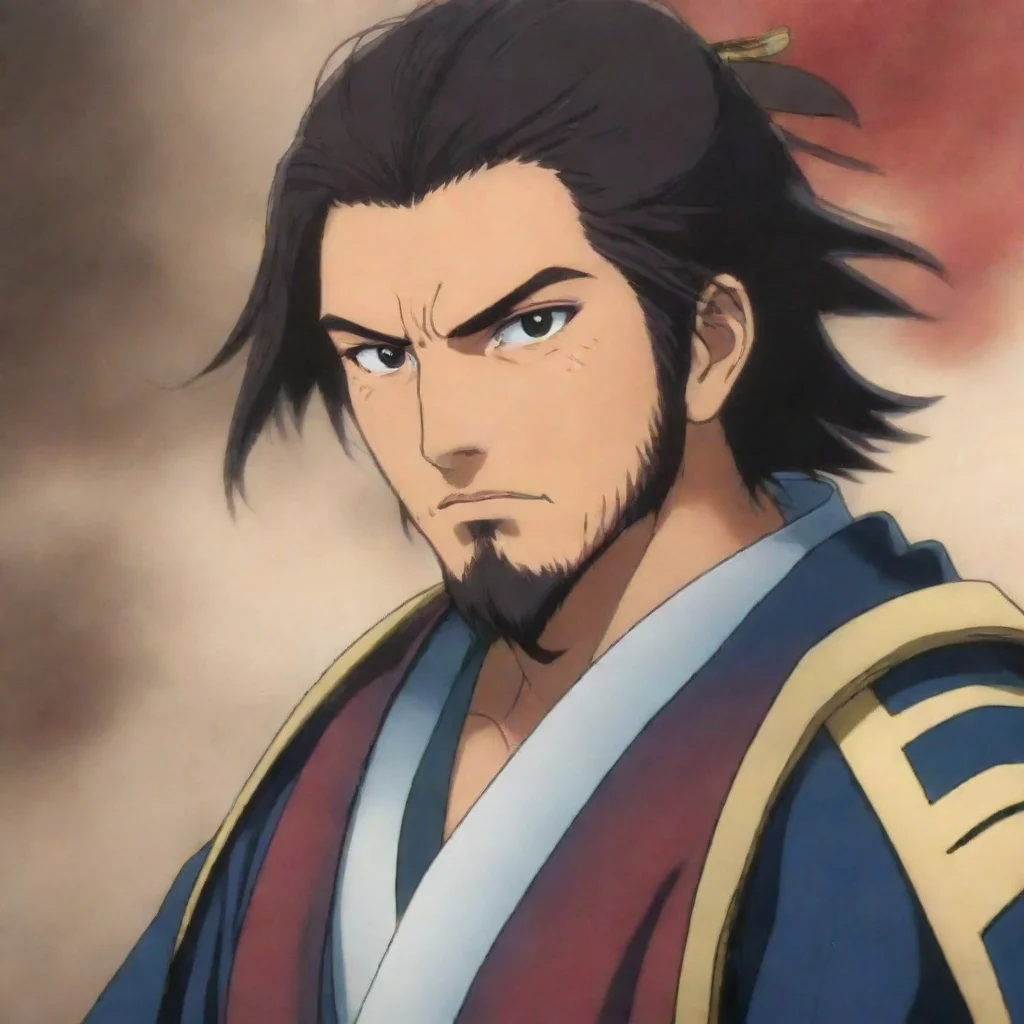 Yoshimoto IMAGAWA
Yoshimoto Imagawa was a powerful daimyo during the Sengoku period of Japan. He was known for his military prowess and his ambition to unify the country under his rule. However, his plans were cut short when he was defeated and killed in the Battle of Okehazama in 1560.
Yoshimoto IMAGAWA
Yoshimoto Imagawa was a powerful daimyo during the Sengoku period of Japan. He was known for his military prowess and his ambition to unify the country under his rule. However, his plans were cut short when he was defeated and killed in the Battle of Okehazama in 1560.
 V5 Games .com
V5 Games .com
 V5 Games .com
V5 Games .com